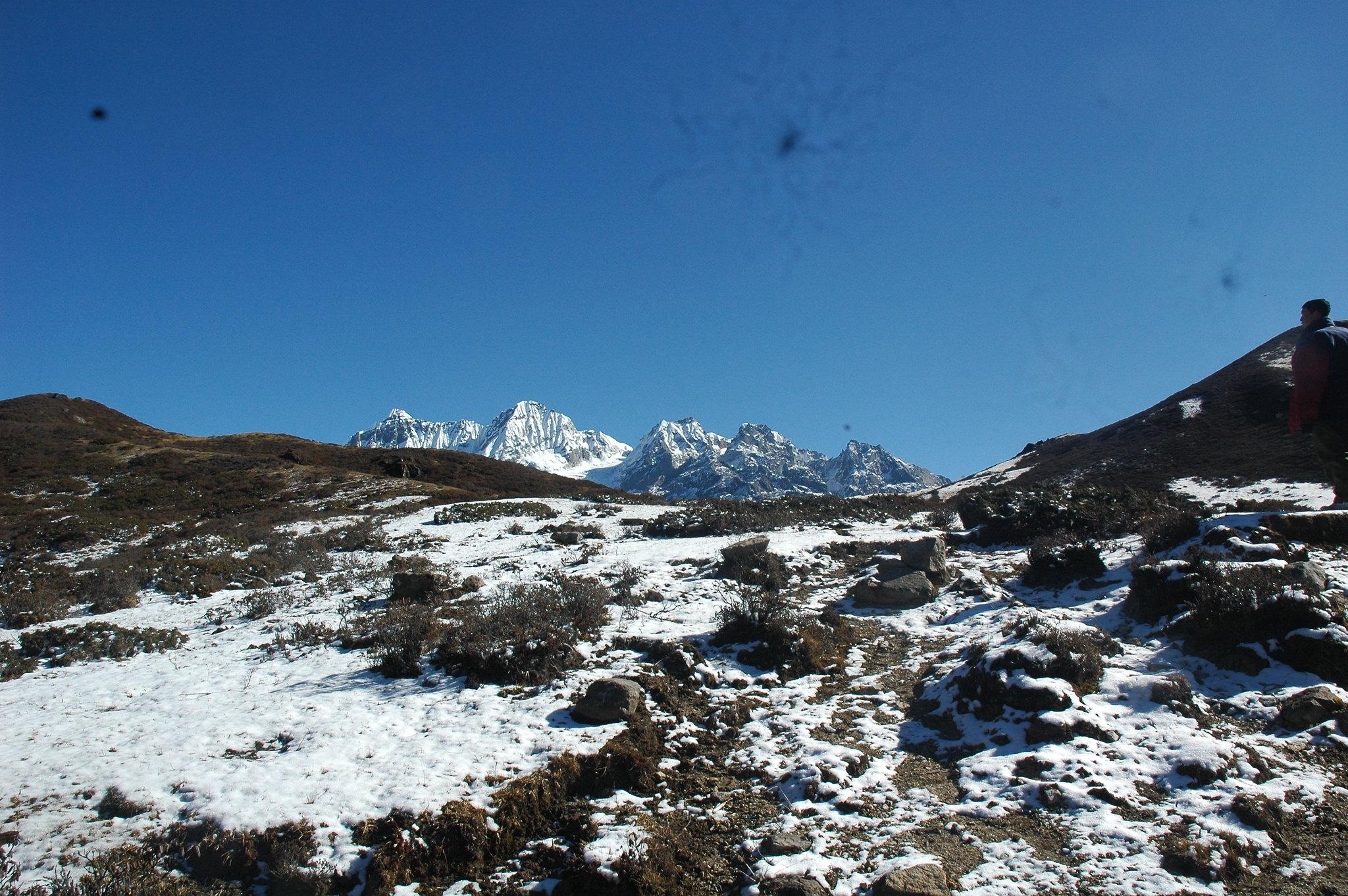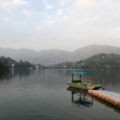Goecha La Trek: Sikkim’s Hidden Winter Wonderland

Tucked away in the heart of West Sikkim lies a trekking route that remains surprisingly under the radar despite offering one of the most spectacular mountain experiences in the Indian Himalayas. The Goecha la trek Sikkim is not just another mountain trail—it is an offbeat trek that brings you face-to-face with towering Himalayan peaks and landscapes that shift dramatically with each season. The Goecha La trek, which winds through the Kanchenjunga National Park, presents adventurers with an intimate encounter with the world’s third-highest peak-Mount Kanchenjunga-and a journey that transforms dramatically with each season.
In this Blog
The Trek That Takes You to Kanchenjunga’s Doorstep
Starting from the historic town of Yuksom, once the capital of Sikkim, the Goecha la trek Sikkim covers approximately Goechala trek distance of 90 kilometers over 8 to 11 days, depending on the chosen itinerary. The trail ascends from an altitude of 5,840 feet at Yuksom to reach the Goecha La pass at a breathtaking 16,207 feet, offering trekkers a front-row seat to one of nature’s grandest spectacles.
What sets this trek apart is its proximity to Kanchenjunga’s southeast face. Unlike distant mountain views from other treks, the Goecha la trek Sikkim brings trekkers remarkably close to the snow-capped giant, along with stunning vistas of Mount Pandim, Mount Kabru, and a constellation of other Himalayan peaks. The landscape unfolds like chapters in a book—dense rhododendron forests give way to alpine meadows, which eventually surrender to rocky terrain and high-altitude lakes.
A Journey Through Diverse Landscapes
The Goecha la trek Sikkim follows a well-established route through the Rathong Valley, passing through villages and campsites that have become waypoints for generations of trekkers. From Yuksom, the trail leads to Sachen, then to Tshoka, a charming village that serves as a crucial acclimatization point. Beyond Tshoka, trekkers reach Dzongri, perhaps the most iconic stop on the entire route.
Dzongri sits at approximately 13,000 feet and offers panoramic views that justify the climb. Many itineraries include a side hike to Dzongri Top, where sunrise paints the mountains in shades of gold and crimson. This acclimatization day proves essential, as the body needs time to adjust before pushing toward higher altitudes on the Goecha la trek Sikkim.
From Dzongri, the path continues to Thangsing and then to Lamuney, the last campsite before the final push to Goecha La. Each campsite brings its own character—Thangsing sits beside a river with views of Pandim, while Lamuney, perched at around 13,700 feet, serves as the staging ground for the predawn ascent to the pass.
The Winter Challenge: December’s Harsh Beauty
While many trekking guides suggest avoiding December, this winter month holds a peculiar allure for those seeking solitude and an authentic challenge. The Goechala trek in December transforms into an entirely different expedition, one that demands respect, preparation, and a willingness to face nature at its most unforgiving.
By mid-November, night temperatures at altitudes above 13,000 feet plummet to minus 15 degrees Celsius or lower. Early morning hikes to viewpoints test every fiber of endurance against the biting cold. The trails that meander gently through forests in spring become treacherous paths of ice and packed snow. Frozen streams replace the gentle babble of water, and the rhododendron forests stand bare, stripped of their colorful blooms but hauntingly beautiful in their winter stillness.
December brings heavy snowfall to the region, making sections of the Goecha la trek Sikkim difficult or sometimes impassable. The extreme cold makes camping a serious undertaking, requiring specialized winter gear including four-season tents, sub-zero sleeping bags, insulated mats, and proper layering systems. Micro-spikes become essential equipment rather than optional accessories, and gaiters help prevent snow from entering boots during deep-snow sections.
Despite—or perhaps because of—these challenges, December offers rewards that other seasons cannot match. The mountains appear with crystalline clarity against cobalt skies. The absence of monsoon clouds and pre-spring haze means visibility reaches its peak. The crowds thin dramatically, offering an experience of near-solitude on trails that bustle with activity during peak seasons.
However, it bears mentioning that this Goechala trek in december shouldn’t be attempted lightly. The combination of extreme cold, challenging terrain, and potential weather changes means only experienced trekkers with proper preparation should consider winter expeditions. The physical demands intensify, and the margin for error narrows considerably.
Best Times and Seasonal Variations
For those seeking the classic Goecha la trek Sikkim experience without winter’s extreme conditions, two seasons stand out. The post-monsoon window from mid-September through November offers clear mountain views and stable weather. September through October are considered the finest months, delivering spectacular sunrises and sunsets with minimal cloud cover blocking the peaks.
The spring season from March through May presents a different kind of magic. The rhododendron forests burst into bloom, painting entire hillsides in vibrant reds, pinks, and whites. The weather warms considerably, with daytime temperatures ranging from 7 to 15 degrees Celsius, though nights at higher camps still drop well below freezing. The mountains remain visible, and the emerging spring landscape adds color and life to the trek.
Monsoon months from July through August should generally be avoided. Heavy rains transform trails into slippery, muddy challenges, and clouds obscure mountain views for days at a stretch. The risk of landslides increases, and leeches emerge in lower-altitude forests, adding an unwelcome element to the journey.
The Cultural Thread
Beyond its natural splendor, the Goecha la trek Sikkim weaves through territory rich in Buddhist culture. Yuksom itself holds historical significance as Sikkim’s first capital, and the town’s cultural heritage remains evident in its architecture and traditions. Prayer flags flutter at high points along the trail, and the occasional monastery or chorten reminds trekkers that these mountains hold spiritual significance for local communities.
The villages along the route—Tshoka, Sachen, and others—offer glimpses into traditional Sikkimese life. Homestays and local guides provide not just logistical support but also insights into the region’s customs, beliefs, and relationship with the mountains that dominate the skyline.
Planning the Journey
The Goecha La trek Sikkim requires two permits: a trekking permit and entry to Kanchenjunga National Park. While independent trekking is technically possible, most adventurers opt for organized groups or hire local guides, partly due to permit procedures and partly because of the genuine value guides bring to the experience. Local guides know the terrain intimately, understand weather patterns, and can make crucial decisions about route safety and timing.
Trek costs vary based on group size, season, and services included, typically ranging from 16,000 to 35,000 rupees. Most packages include accommodation in homestays at the base camp and tents during the trek itself, along with meals from the first dinner through the final breakfast.
Physical preparation matters significantly. The trek demands good cardiovascular fitness, strong legs for long days of ascending and descending, and mental resilience for challenging conditions. Trekkers typically walk between 6 to 12 kilometers per day, with daily trekking durations ranging from 5 to 8 hours depending on the stage.
The difficulty level falls into the moderate to challenging category. Long trekking hours, steep ascents, high altitude, and rapidly changing weather all contribute to the challenge. Even beginners can complete the Goecha la trek Sikkim with proper preparation and acclimatization, but preparation cannot be skipped.
The Summit Experience
The predawn wake-up call at Lamuney starts the most anticipated—and most demanding—day of the trek. Trekkers often begin the ascent to Goecha La in darkness, headlamps bobbing like fireflies as groups make their way across rocky, sometimes icy terrain. The air grows thinner with each step, and conversations cease as everyone focuses on maintaining steady breathing and forward momentum.
Reaching Goecha La as dawn breaks over Kanchenjunga ranks among the most profound experiences available to trekkers. The third-highest mountain in the world towers overhead, close enough that its massive scale becomes almost incomprehensible. The first light touches the summit, and the mountain seems to ignite from within, glowing against the deep blue of the pre-dawn sky.
At this moment, at 16,207 feet, surrounded by a panorama of Himalayan giants, the days of trekking, the sore muscles, the cold nights, and the challenging ascents all make perfect sense. The view encompasses not just Kanchenjunga but also Mount Pandim’s distinctive shape, the sharp peak of Kabru, and dozens of other mountains forming a saw-toothed horizon in every direction.
Where to Stay
For trekkers embarking on the Goecha la trek Sikkim, it’s essential to find accommodations that offer comfort, proximity to trekking routes, and a serene environment to relax before and after the journey. Here are some StayVista properties in Sikkim that cater to these needs:
- The Stargazer – Pelling: Located in Pelling, this villa offers stunning views of the Kanchenjunga range, making it a peaceful retreat before or after your trek.
- Nature’s Lap – Aritar: Situated near Rongli, this retreat provides a serene escape with spacious cottages and breathtaking mountain views, perfect for unwinding.
- Mystic Nest – Gangtok: Located in Gangtok, this villa is close to popular tourist spots like Rumtek Monastery and Tsomgo Lake, offering both comfort and convenience.
These properties provide a blend of comfort, scenic beauty, and accessibility, ensuring a memorable stay during your offbeat trek adventure.
Practical Tips
Essential gear includes proper trekking boots with good ankle support, layered clothing for temperature variations, a quality sleeping bag rated for sub-zero temperatures (especially important for winter treks), rain gear, sunscreen, sunglasses, a basic first aid kit, and a good headlamp. Winter treks require additional specialized equipment including micro-spikes, insulated gloves, and extra layers.
Altitude sickness poses a real risk on the Goecha la trek Sikkim. The itinerary’s built-in acclimatization days help, but trekkers should know the symptoms and be prepared to descend if necessary. Staying well-hydrated, eating properly despite altitude-suppressed appetite, and maintaining a steady pace rather than rushing all help the body adjust.
The nearest access points are Bagdogra Airport and New Jalpaiguri Railway Station, both in West Bengal. From there, the drive to Yuksom takes approximately 5 to 6 hours through winding mountain roads, offering the first preview of the landscape ahead.
An Offbeat Alternative Worth Discovering
In an era when popular treks face overcrowding and environmental stress, the Goecha la trek Sikkim offers a refreshing alternative. While not unknown, it receives far less traffic than trails like the Valley of Flowers or Roopkund. This relative obscurity preserves the sense of wilderness and adventure that draws people to the mountains in the first place.
The trek doesn’t just showcase natural beauty—it tests physical limits, builds mental toughness, and creates a connection to the Himalayas that lingers long after returning to lower altitudes. Whether undertaken as the Goechala trek in December with its harsh beauty or during the gentler seasons, the journey to Goecha La provides something increasingly rare in the modern world: a genuine adventure into remote mountain territory where nature still dictates the terms of engagement.
For those willing to invest the time, preparation, and effort, the Goecha la trek Sikkim delivers experiences that transcend ordinary travel. It’s a journey measured not just in kilometers and altitude gained, but in moments of stunning beauty, physical challenge overcome, and the profound sense of standing small before mountains that have witnessed centuries pass. In Sikkim’s hidden corner, Kanchenjunga waits, and the trail to its base offers one of India’s most rewarding trekking experiences.





